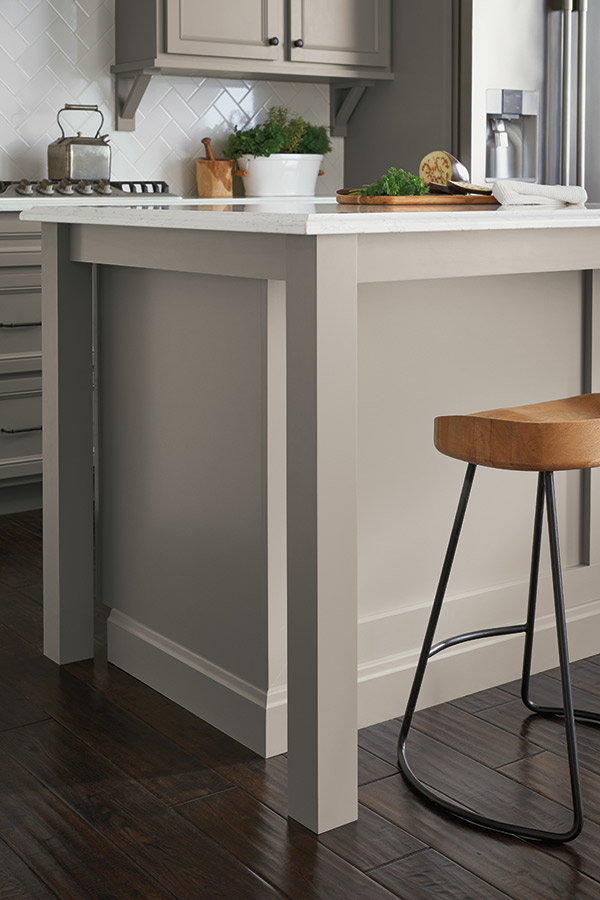Enhance Capability and Style Utilizing Quality Legs For Kitchen Island
Enhance Capability and Style Utilizing Quality Legs For Kitchen Island
Blog Article
A Guide to Picking the Perfect Legs For Kitchen Island for Your Home
Choosing the ideal legs for your kitchen area island is a nuanced choice that impacts both the functionality and visual allure of this main space. Elements such as height, products, and design play a critical role in balancing your island with the total cooking area design. Additionally, comprehending the relevance of security and upkeep can significantly influence your option. As you think about these components, it comes to be evident that the right legs can transform not only the look of your kitchen area yet also its usability for years to come. What specific features should you prioritize in this selection procedure?

Comprehending Kitchen Island Legs
When choosing legs for a kitchen island, it's necessary to understand their useful and aesthetic roles in the general design. The legs act as an important assistance system, guaranteeing security and resilience for the island, which usually functions as an office, eating area, or gathering area. The selection of product and construction method need to be durable adequate to withstand daily use and potential wear.
In addition to their structural obligations, legs add dramatically to the island's visual appeal. They can enhance the kitchen's style, whether through conventional, contemporary, or diverse layouts. The elevation and percentage of the legs are likewise critical factors to consider; they should harmonize with the island's countertop elevation while making certain comfy seating for those making use of the space.
Moreover, the leg design can influence the total circulation of the cooking area. Open, ventilated leg designs can produce a sense of lightness, while strong, significant legs might communicate a much more grounded and stable visual - Legs For Kitchen Island. Recognizing these useful and visual facets will certainly assist house owners in making notified choices that complement their kitchen's style and improve its functionality
Popular Styles and Materials
The option of legs for a cooking area island includes a variety of popular designs and materials, each offering unique features that can boost both performance and aesthetics. Among the most sought-after designs are contemporary, rustic, and traditional. Contemporary legs usually feature sleek, minimal designs that stress simplicity and tidy lines, making them optimal for modern kitchens. Rustic designs, on the other hand, welcome natural environments and commonly showcase recovered wood or troubled finishes, adding heat and charm to the room. Conventional legs typically show elaborate information and craftsmanship, improving classic kitchen area layouts.

Height and Security Considerations

The legs of the kitchen area island should provide sufficient assistance, making sure that the framework can endure day-to-day use without tottering or changing. Product selection plays a substantial role in stability; steel legs, for circumstances, tend to use higher toughness compared to wood.
Matching Your Cooking Area Aesthetic
Choosing the ideal legs for your kitchen island goes beyond capability; it also plays a considerable function in the total aesthetic of the space. When selecting legs, take into consideration the design style of your kitchen. For a contemporary appearance, streamlined metal or minimalist styles can produce a tidy, modern-day ambiance. On the various other hand, conventional or rustic cooking areas usually gain from wooden legs with elaborate outlining or a troubled surface, boosting heat and personality.
Legs that enhance or comparison with your island's surface and bordering kitchen cabinetry can produce visual consistency or striking focal factors. Additionally, consider the coating of the legs; matte, glossy, or distinctive surfaces can considerably impact the total feel of the kitchen.
Installment and Maintenance Tips
Installing kitchen area island legs requires mindful interest to detail to make certain both stability and visual charm. Begin by selecting an ideal location for your island, guaranteeing it is level and has enough area for activity. If you are attaching the legs to a wall surface or using braces for added assistance, make use of a stud finder to find wall studs. Mark the positioning of the legs accurately before exploration.
When securing the legs, make use of top quality screws and, if required, timber glue for additional toughness. For metal legs, make certain that you are utilizing appropriate anchors and tools to avoid damages to your flooring. It is recommended to check for levelness after setup, making adjustments as required to prevent wobbling.
Clean the legs with a suitable cleaner, preventing rough materials that may scrape the surface. By complying with these installment and upkeep suggestions, you can make sure that your kitchen island legs continue to be both visually enticing and practical.
Verdict
In conclusion, selecting the ideal legs for a important link kitchen island requires mindful factor to consider of height, security, and visual compatibility. By selecting appropriate products and styles that line up with the overall cooking area style, capability can be boosted while keeping visual appeal. Proper installment and recurring maintenance additionally add to the toughness and longevity of the cooking area island. Eventually, thoughtful leg option plays a vital duty in raising both the functionality and layout of the cooking area space.
When selecting legs for a kitchen area island, it's important to recognize their practical and aesthetic functions in the general design. Open, ventilated leg designs can create a feeling of agility, while solid, considerable legs might convey a much more based and stable aesthetic. The legs of the cooking area island should offer ample assistance, guaranteeing that the framework can hold up against daily use without shifting or wobbling.Installing kitchen area island legs calls for mindful attention to detail to guarantee both security and visual allure.In verdict, selecting click here now the suitable legs for a kitchen area island requires cautious factor to consider of elevation, security, and visual compatibility.
Report this page